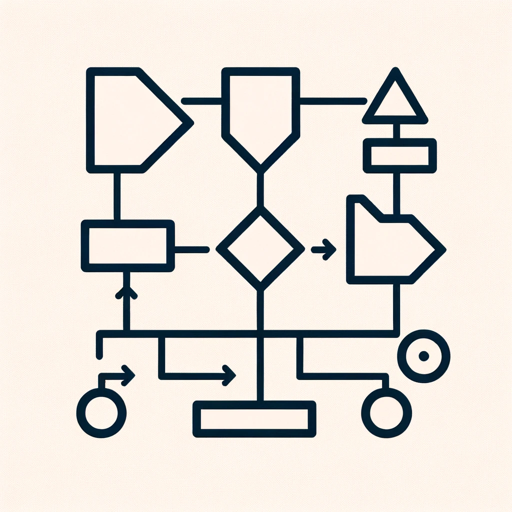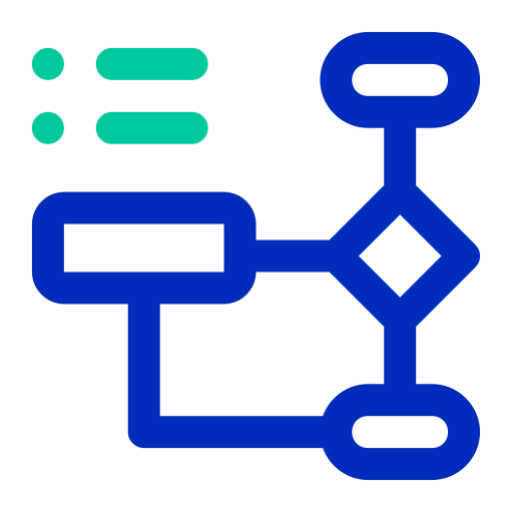Flow Charting-AI-powered flowchart creator
Visualize your ideas with AI-powered clarity
Explain photosynthesis through a flow chart.
Create a flow chart about the water cycle.
Show the process of making coffee in a flow chart.
Illustrate the steps of project management in a flow chart.
Related Tools
Load More
Flow Chart Genius
I create flow charts to explain connections.

Flowchart Generator
Expert in multilingual generation of sequence diagrams, Gantt charts, class diagrams, state diagrams, and flowcharts ^_^

Flowchart Maker 🌟
🔥 An expert in generating flowcharts 🌈. This GPT can make flowcharts directly in your chat 😄, without visiting other websites ✨. V2.0

Flowchart Maker
Converts algorithm to Mermaid flowchart URL

Flowchart | Diagrama de flujo | خريطة تدفق | 流程图
Auto flowchart your code and text | Automatizar el diagrama de flujo de tu código y texto" en español | قم بإنشاء مخطط تدفق تلقائي للكود والنص الخاص بك

Flow Diagram Producer
Specializes in precise flow diagrams.
20.0 / 5 (200 votes)
Introduction to Flow Charting
Flow Charting is a specialized tool designed to create visual representations of processes, systems, and concepts in the form of flow charts. The primary purpose of Flow Charting is to simplify complex information and make it easily understandable through visual aids. This tool is ideal for breaking down detailed topics into smaller, more digestible parts, making it perfect for educational, professional, and technical use. Flow charts are particularly useful in scenarios where step-by-step processes need to be illustrated, decisions need to be mapped out, or workflows need to be analyzed. By using shapes, arrows, and structured layouts, Flow Charting helps users convey information clearly and efficiently. For example, a company could use Flow Charting to outline their onboarding process for new employees, detailing each step from the initial interview to the first day on the job.

Main Functions of Flow Charting
Process Mapping
Example
Creating a flow chart to map out the steps involved in the software development lifecycle.
Scenario
A software development team can use Flow Charting to outline each phase of their development process, from initial requirements gathering to deployment. This visual representation helps team members understand the sequence of activities, identify potential bottlenecks, and improve efficiency.
Decision Making
Example
Designing a decision tree to help a business decide whether to launch a new product.
Scenario
A marketing team needs to decide if they should launch a new product based on market research data. Using Flow Charting, they create a decision tree that includes different market scenarios, competitor analysis, and potential outcomes, which helps in making an informed decision.
Workflow Analysis
Example
Developing a flow chart to analyze the workflow of a customer service department.
Scenario
A customer service manager wants to streamline operations to reduce response times. By using Flow Charting to visualize the current workflow, they can identify redundant steps, allocate resources more effectively, and optimize the overall process for better customer satisfaction.
Ideal Users of Flow Charting
Educators and Students
Educators and students benefit greatly from using Flow Charting as it helps in breaking down complex subjects into manageable parts, making learning and teaching more effective. For instance, a teacher can use a flow chart to explain a complicated scientific process, while students can create flow charts to organize their thoughts and study materials, enhancing their understanding and retention of information.
Business Professionals
Business professionals, including project managers, analysts, and decision-makers, use Flow Charting to visualize processes, analyze workflows, and aid in strategic planning. It enables them to clearly communicate procedures, improve operational efficiency, and make data-driven decisions. For example, a project manager might use flow charts to outline project timelines, dependencies, and deliverables to keep teams aligned and projects on track.

How to Use Flow Charting
Step 1
Visit aichatonline.org for a free trial without login, also no need for ChatGPT Plus.
Step 2
Familiarize yourself with the interface by exploring the basic features like shape selection, connections, and text labels.
Step 3
Start creating your flowchart by selecting the topic or process you want to visualize, and then map out the main steps or decision points.
Step 4
Customize your flowchart with color coding, icons, and additional notes to enhance clarity and visual appeal.
Step 5
Save and export your flowchart in your preferred format, or share it directly through a link for collaboration or presentation.
Try other advanced and practical GPTs
✨ Social Media Avatar GPT ✨
Create personalized 3D animated avatars with AI.

Talking Avatar
AI-powered avatars for video content
PixArt Avatar
Transform Your Photos into Pixar Magic

Pixar-style 3D avatars
AI-powered Pixar-style 3D avatars
科研选题
AI-powered research topic discovery

Website Finder
AI-powered website recommendations tailored for you

Upload PDF and Summarise
AI-powered PDF summarization made easy.

3D Avatar Generator: Just upload your photo!
AI-powered 3D avatar creation tool.

Mock-Up Generator
AI-powered mock-ups from text descriptions.

X-pert
AI-powered content tailored for professionals.

Image to HTML, CSS, and JavaScript Code Generator
AI-powered code generation from images

Lingua Bridge
AI-powered Polish-English Translation

- Project Planning
- Brainstorming
- Decision Making
- Visualization
- Process Mapping
Flow Charting Q&A
What is Flow Charting, and how does it work?
Flow Charting is a tool that allows users to create visual diagrams of processes, systems, or concepts. It works by providing a user-friendly interface where you can drag and drop shapes, connect them, and add text to outline steps or decisions.
Do I need any prior experience to use Flow Charting?
No prior experience is required. The tool is designed to be intuitive for beginners, with simple drag-and-drop functionality, and offers advanced features for experienced users.
What are the main features of Flow Charting?
Key features include a wide range of customizable shapes, automatic alignment and spacing, color coding, icon libraries, and easy export options in various formats (PNG, PDF, etc.).
Can I use Flow Charting for collaborative projects?
Yes, Flow Charting supports real-time collaboration. You can share your flowchart via a link, allowing others to view or edit the chart simultaneously.
What types of diagrams can I create with Flow Charting?
You can create a variety of diagrams including process flows, decision trees, mind maps, organizational charts, and more, making it versatile for different use cases.